Drive social media lawsuit
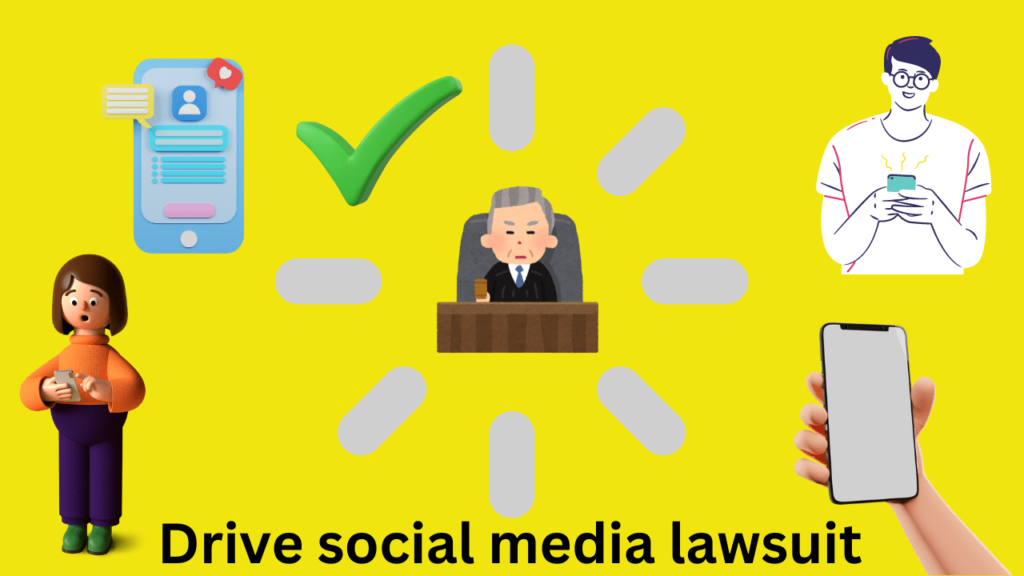
1. Background of Drive Social Media
2. The Allegations of social media
3. Impact on the Company
4. Legal Proceedings-Court Cases
5. Sector Responses-Industry Reactions
6. Implications for Social Media Marketing
7. Examination of Lawsuits on Social Media
8. Drive Social Media’s Future
9. Legal Teams’ Function
10. Management of Public Relations
11. Regulation of Social Media
12.Ethical Considerations
1. Background of Drive Social Media
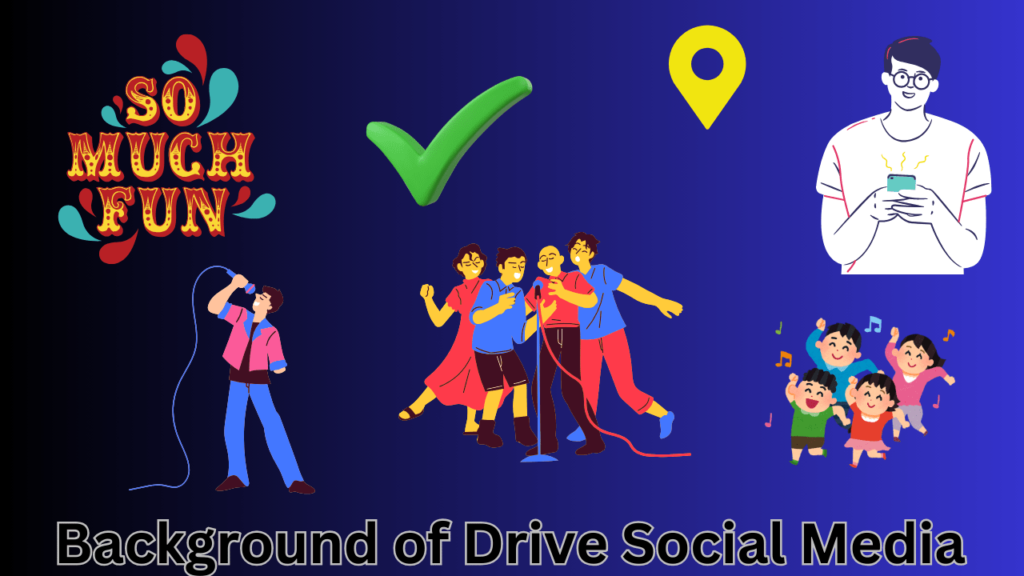
Drive Social Media is a digital marketing company that focuses on using social media platforms to help businesses increase their brand awareness and customer interaction. The company, which was established in St. Louis, Missouri, helps companies maximize their online presence by providing a range of services like social media management, content production, and performance tracking. Motivate Social Media takes great satisfaction in employing data-driven tactics to increase clients’ return on investment from their digital marketing initiatives and produce quantifiable outcomes. The organization has established itself as a prominent participant in the digital marketing arena, offering firms guidance through the intricacies of social media marketing.
1. Specialization in Social Media Marketing:
Specialization in social media marketing focuses on creating tailored strategies to engage audiences and optimize brand presence across various platforms.
2.Data-Driven Strategies:
Data-driven strategies on social media leverage analytics to optimize content, target audiences effectively, and measure campaign performance for better results.
3.Founded in St. Louis, Missouri:
Founded in St. Louis, Missouri, the social media company has grown to influence digital engagement on a global scale.
4.Client-Focused Services:
Client-focused services on social media prioritize tailoring strategies to meet individual business needs and enhance user engagement.
5.Emphasis on Measurable Results:
Emphasis on measurable results in social media ensures that strategies are driven by data and performance metrics to achieve clear, quantifiable outcomes.
2. The Allegations of social media
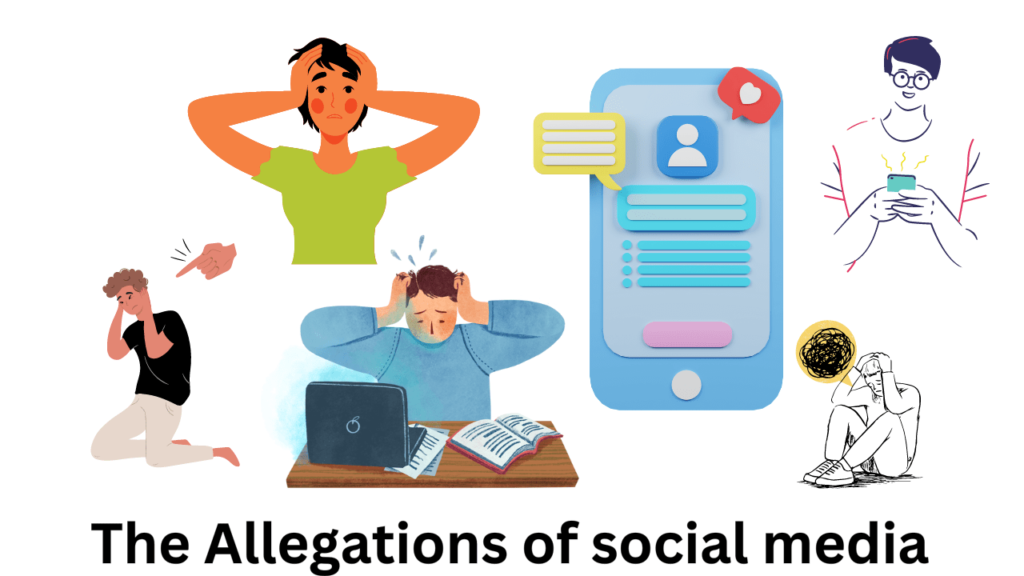
The propagation of false charges on social media is one of the biggest problems, since it can have disastrous consequences for both people and businesses. False charges have the power to destroy reputations, inflict psychological harm, and even have legal repercussions.
1.False Advertising:
False advertising on social media involves misleading or deceptive claims that misrepresent products or services, potentially damaging consumer trust and violating platform policies.
2.Privacy and Data Protection:
Privacy and data protection on social media involve safeguarding user information and ensuring it is handled securely and transparently in compliance with legal standards.
3.Compliance with Online Advertising Standards:
Compliance with online advertising standards on social media ensures that ads meet regulatory requirements and ethical guidelines to maintain transparency and consumer trust.
4.Business Contracts:
Business contracts on social media define the terms and obligations for partnerships, advertising deals, and collaborations between companies and influencers or other entities.
5.Malware Attacks:
Malware attacks on social media involve malicious software distributed through compromised accounts or links, posing risks to user security and data integrity.
3. Impact on the Company
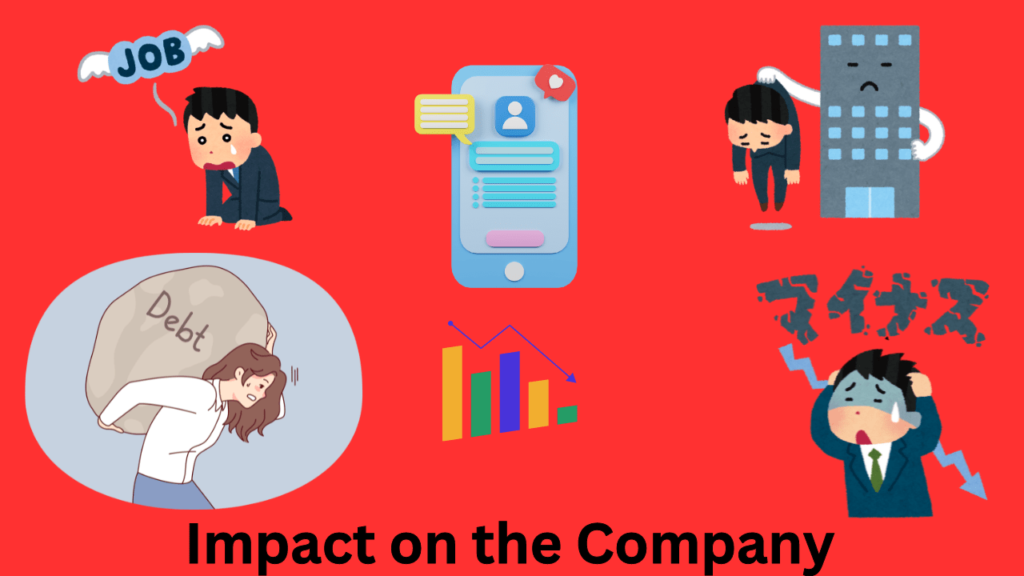
Social media management may be time-consuming and labor-intensive, expose firms to unfavorable reviews and reputational hazards, and raise privacy concerns. It also runs the risk of placing too much reliance on platforms whose algorithms or regulations change.
1.Negative feedback and reputation management:
Negative feedback and reputation management on social media involve addressing and mitigating criticism to protect and improve a brand’s public image.
2.Changes in platform algorithm:
Changes in platform algorithms on social media can significantly impact content visibility, user engagement, and overall strategy effectiveness.
3.Information overload and limited attention span:
Information overload and limited attention spans on social media challenge users to process vast amounts of content quickly, affecting engagement and content effectiveness.
4.Return on investment measurement:
Return on investment (ROI) measurement in social media evaluates the effectiveness of campaigns by comparing the financial gains to the costs incurred.
5.Social media privacy and data security concerns:
Social media privacy and data security concerns involve protecting user information from unauthorized access, breaches, and misuse to ensure trust and compliance.
4. Legal Proceedings-Court Cases
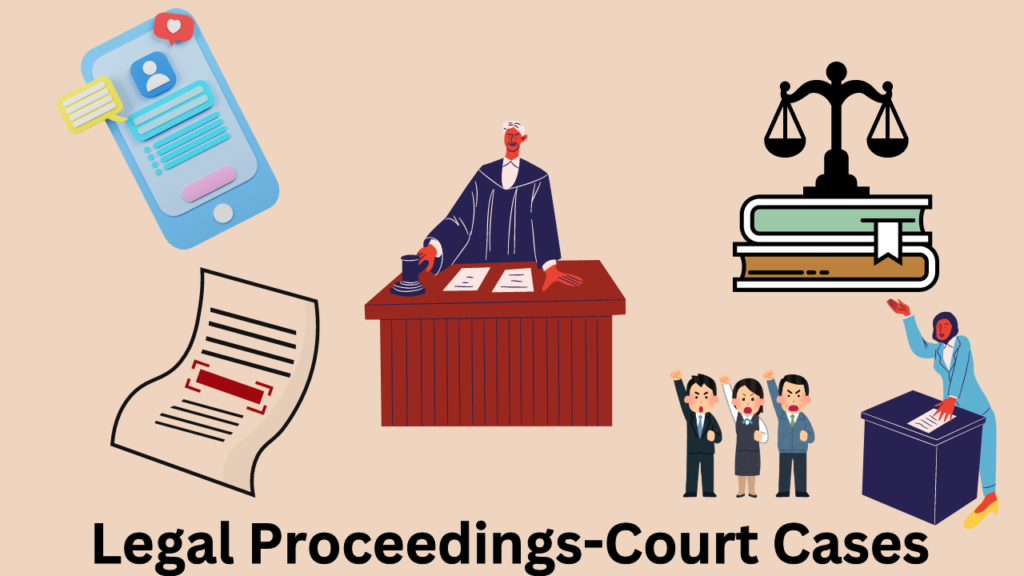
Concerns regarding privacy invasion arise when social media is used as evidence in court since private messages or delicate personal information might be revealed without permission. False or Incorrect Information Not all of the content published on social media is trustworthy or truthful.
1.Misleading or Inaccurate Information:
Misleading or inaccurate information on social media can distort perceptions, spread falsehoods, and undermine trust in both individuals and brands.
2.Tampering with Evidence:
Tampering with evidence on social media involves altering or deleting posts and data to obstruct investigations or mislead about the true events.
3.Selective Representation:
Selective representation on social media involves presenting only certain aspects of a situation or profile to influence perception and create a biased image.
4.Bias and Prejudice:
Bias and prejudice on social media manifest through content and interactions that reflect discriminatory attitudes or unfair treatment based on race, gender, or other factors.
5.Challenges in Authentication:
Challenges in authentication on social media include ensuring secure user verification and preventing unauthorized account access amidst evolving security threats.
5. Sector Responses-Industry Reactions
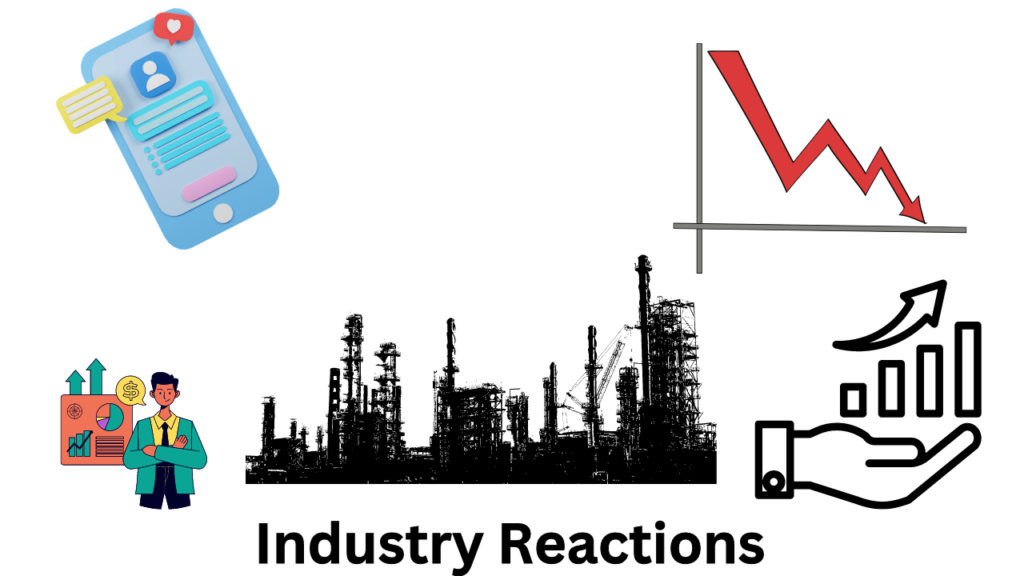
Businesses may encounter unfavorable social media responses from the general public, viral backlash, and the quick dissemination of unfavorable reviews. Errors or divisive content may spread fast, harming a company’s reputation and eroding consumer confidence. Competitors may also use social media to draw attention to a company’s weaknesses.
1.Increased Scrutiny:
Increased scrutiny on social media involves heightened examination of content and interactions, often leading to stricter regulation and accountability for users and platforms.
2.Public Criticism:
Public criticism on social media involves feedback or backlash from users that can impact a brand’s reputation and prompt corrective actions.
3.Competitor Exploitation:
Competitor exploitation on social media involves leveraging rivals’ weaknesses or controversies to gain a competitive advantage and enhance one’s own brand.
4.Viral Backlash:
Viral backlash on social media occurs when negative reactions to a brand or individual spread rapidly, amplifying criticism and potentially causing significant reputational damage.
5.Loss of Customer Trust:
Loss of customer trust on social media results from perceived dishonesty, poor service, or mishandling of issues, leading to diminished brand loyalty and engagement.
6. Implications for Social Media Marketing

Although social media marketing can increase a brand’s visibility and engagement, it also has drawbacks that must be carefully managed to prevent bad press and reputational damage. It necessitates regular content production and strategy modifications depending on performance indicators. If not properly managed, an over-reliance on social media can potentially eclipse other marketing platforms and result in lower results.
1.Brand Visibility:
Brand visibility on social media refers to the extent to which a brand’s presence and content are seen and recognized by users across various platforms.
2.Engagement Risks:
Engagement risks on social media involve potential negative interactions, such as spam, harassment, or backlash, that can harm a brand’s reputation and user experience.
3.Performance Tracking:
Performance tracking on social media involves measuring key metrics and analytics to evaluate the effectiveness of campaigns and strategies.
4.Channel Balance:
Channel balance on social media refers to the strategic distribution of content and engagement efforts across multiple platforms to optimize reach and effectiveness.
5.Content Demands:
Content demands on social media involve the need for high-quality, relevant, and frequent posts to maintain user interest and engagement.
7. Examination of Lawsuits on Social Media
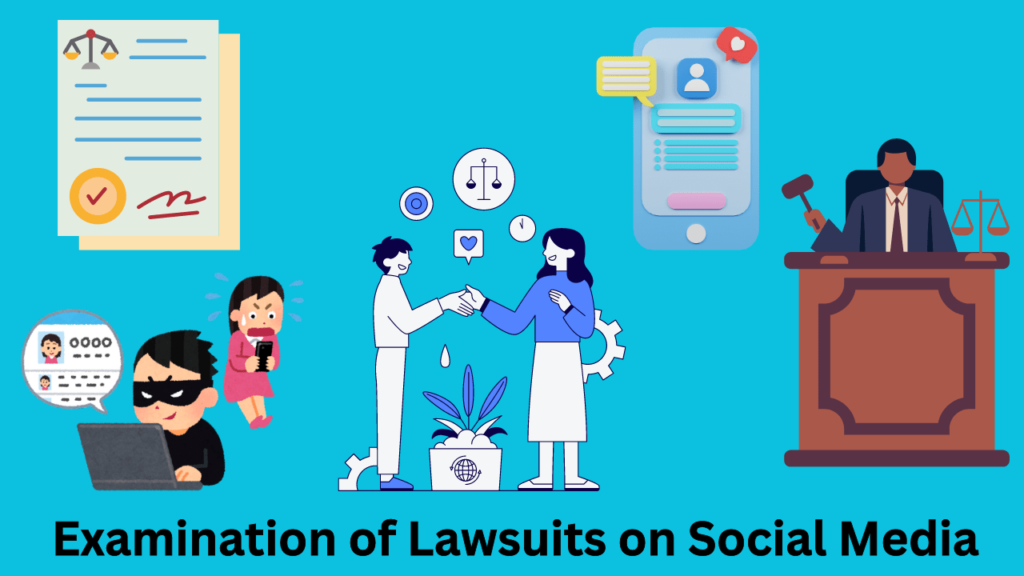
Lawsuits related to social media frequently center on matters such as intellectual property conflicts, privacy infringement, and defamation. Legal actions pertaining to user-generated content or company posts can cause considerable financial and brand harm to companies. Stronger content filtering procedures may be required as a result of these cases and heightened regulatory scrutiny.
1.Increased Regulation:
Increased regulation on social media involves stricter rules and oversight aimed at ensuring platform compliance with legal and ethical standards.
2.Reputational Damage:
Reputational damage on social media occurs when negative publicity or backlash harms a brand’s image and erodes public trust.
3.Intellectual Property Disputes:
Intellectual property disputes on social media involve conflicts over unauthorized use or infringement of copyrighted material, trademarks, or patents.
4.Privacy Violations:
Privacy violations on social media occur when personal data is accessed, shared, or misused without user consent, compromising individual confidentiality.
5.Defamation:
Defamation on social media involves false statements that damage an individual’s or organization’s reputation and can lead to legal repercussions.
8. Drive Social Media's Future

Future social media platforms could expect to see more AI integration for more tailored content and enhanced user experiences, as well as more immersive formats like AR and VR and heightened privacy and data protection concerns. Advanced analytics will also drive platform evolution, enabling more successful marketing and engagement tactics.
1.Advanced Analytics:
Advanced analytics on social media involve using sophisticated tools to analyze user behavior, engagement patterns, and campaign effectiveness for data-driven decision-making.
2.Immersive Technologies:
Immersive technologies on social media, such as AR and VR, create interactive and engaging experiences that enhance user interaction and content presentation.
3.Privacy and Data Protection:
Privacy and data protection on social media involve implementing measures to secure user information and ensure it is handled in compliance with privacy laws and regulations.
4.AI Integration:
AI integration on social media enhances user experience through personalized content, automated responses, and advanced analytics.
5.Evolving Platforms:
Evolving platforms on social media continuously update features and algorithms to adapt to user needs and emerging trends.
9. Legal Teams' Function
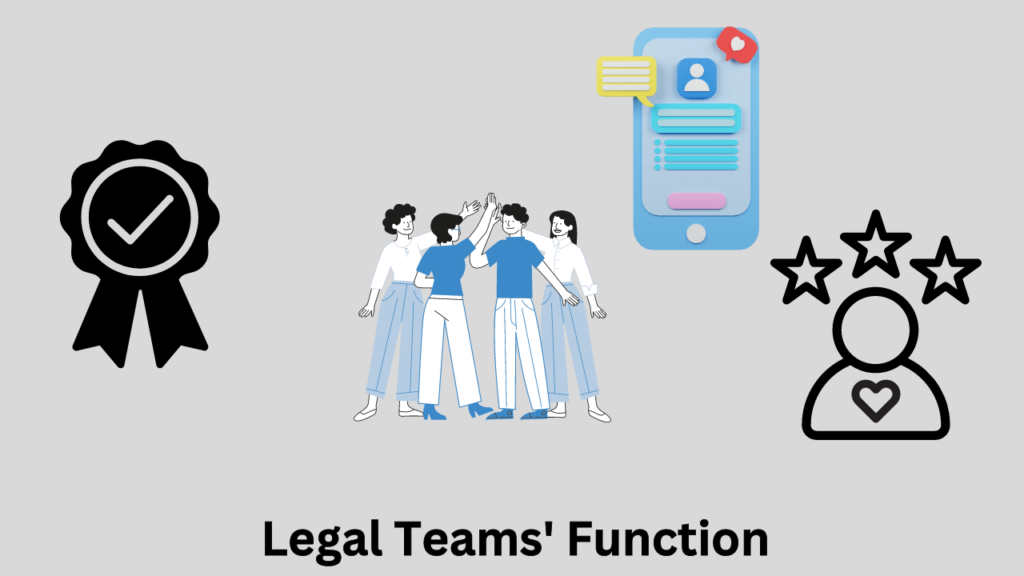
Social media firms’ legal departments handle disputes, safeguard intellectual property, maintain privacy issues, and make sure regulations are followed. They handle problems with user content, draft terms of service, and reply to legal questions. Their efforts are essential to reducing risks and maintaining the integrity of the platform.
1. Compliance and Regulation:
Ensure the platform adheres to local and international laws and regulations.
2. Intellectual Property Protection:
Safeguard the company’s and users’ intellectual property rights.
3. Dispute Resolution: Manage and resolve legal disputes involving users, content, or other entities.
4. Privacy and Data Protection:
Oversee privacy policies and ensure user data is handled securely and lawfully.
5. Policy Development: Draft and update terms of service, community guidelines, and other legal documents.
10. Management of Public Relations
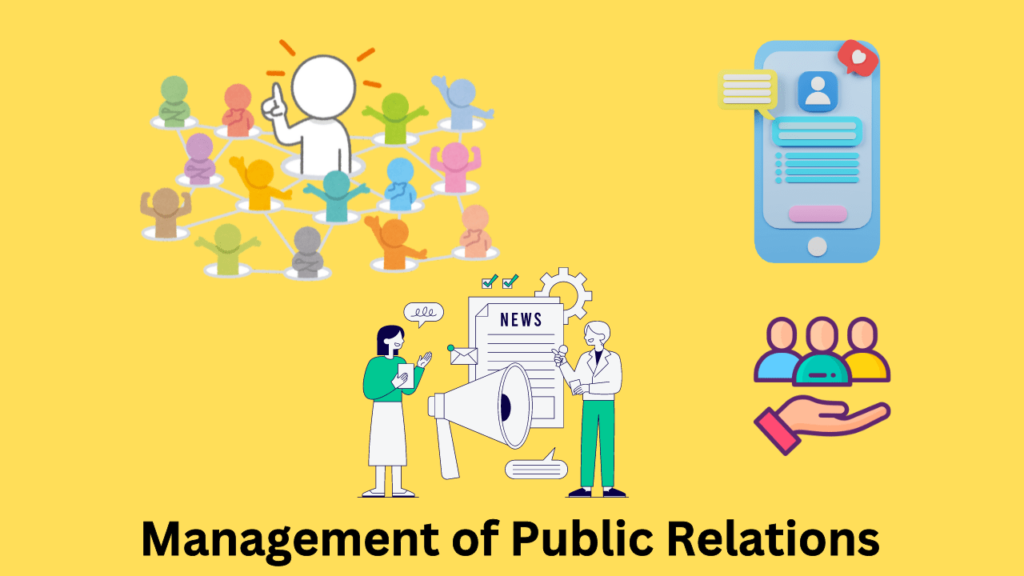
Social media public relations management entails building a favorable brand image, interacting with the public, and quickly handling any emergencies. It entails producing and disseminating user-relevant information, keeping an eye on social sentiment, and answering criticism. Maintaining a positive public image and fostering trust are two benefits of effective PR management.
1. Brand Image Crafting:
Develop and maintain a positive and consistent brand image through strategic content and messaging.
2. Audience Engagement:
Actively interact with followers, respond to comments, and foster a community around the brand.
3. Crisis Management: Address and mitigate any negative situations or crises quickly and transparently to maintain trust.
4. Content Creation and Sharing:
Produce and distribute engaging content that aligns with the brand’s values and resonates with the target audience.
5. Social Sentiment Monitoring:
Continuously track public sentiment and feedback to gauge brand perception and adjust strategies accordingly.
11. Regulation of Social Media
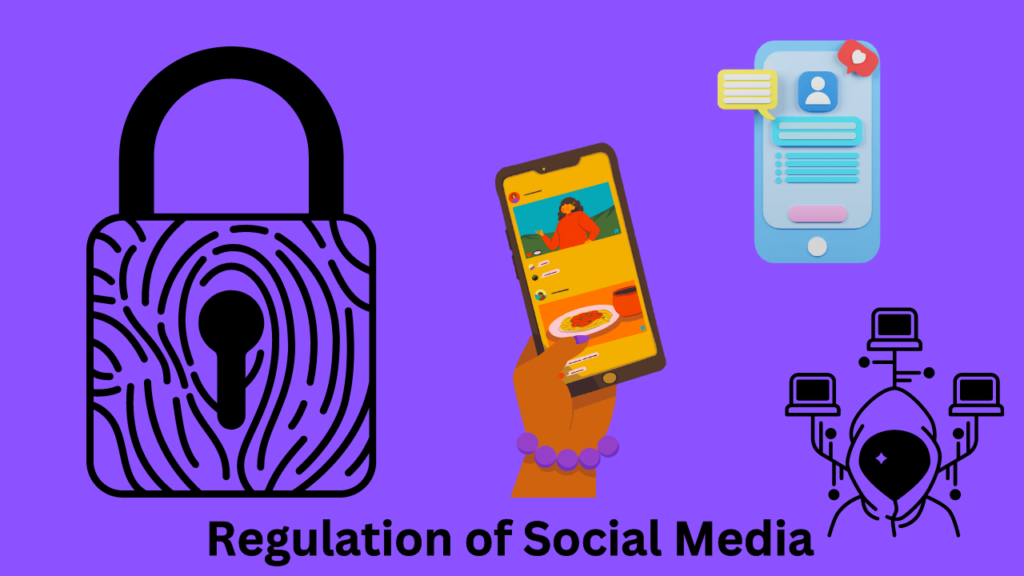
Implementing laws and policies to control content, user behavior, and platform operations is the process of regulating social media. It attempts to stop negative things like hate speech, disinformation, and invasions of privacy. To guarantee that platforms run securely and morally, governments and regulatory agencies implement these laws. Good regulations strike a compromise between the requirement for accountability and user protection and the right to free speech.
1. Content Moderation:
Implementing rules to control harmful content, including misinformation, hate speech, and illegal activities.
2. User Privacy Protection:
Enforcing laws that safeguard user data and ensure transparent data handling practices.
3. Accountability and Transparency:
Requiring social media companies to be transparent about their policies, algorithms, and enforcement actions.
4. Child Safety:
Establishing guidelines and protections to prevent exploitation and ensure the safety of minors online.
5. Combatting Cybercrime:
Developing and enforcing laws to address cyberbullying, harassment, and other online criminal activities.
12.Ethical Considerations
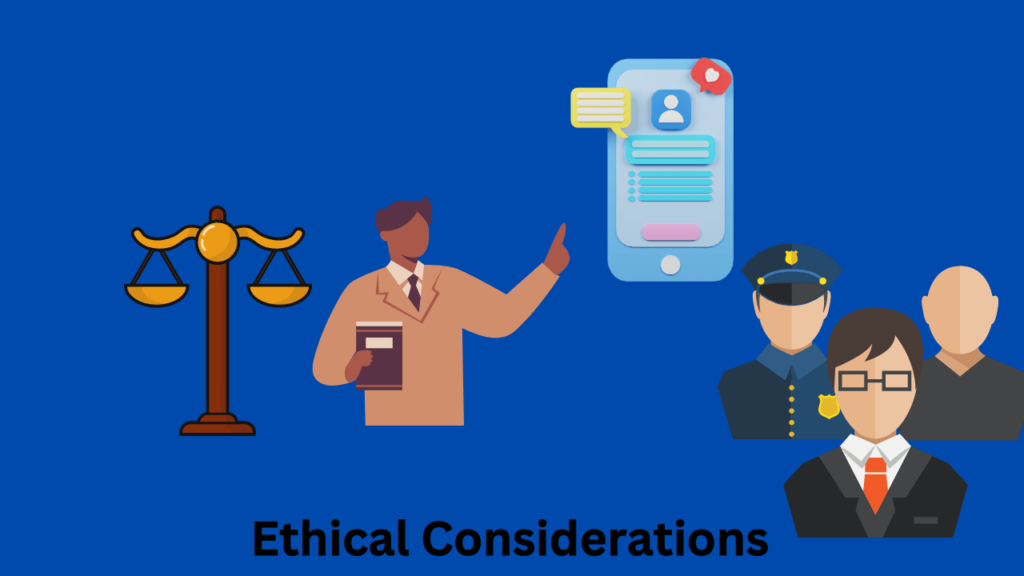
Protecting privacy, promoting a positive online community, and ensuring that users are treated fairly and with respect are the main ethical concerns in social media. Online spaces need to strike a balance between protecting users from harm—like misinformation and cyberbullying—and allowing freedom of speech. To keep users’ trust, data usage and algorithmic decisions must be transparent. Social media businesses also have an obligation to stop discrimination and advance diversity.
1. Privacy Protection:
Ensuring user data is collected, stored, and used responsibly and transparently.
2. Preventing Misinformation:
Taking steps to limit the spread of false or misleading information.
3. Combatting Cyberbullying:
Implementing measures to prevent and address harassment and abusive behavior online.
4. Promoting Inclusivity:
Creating an environment that supports diversity and prevents discrimination.
5. Transparency and Accountability:
Being open about policies, algorithms, and data practices to build and maintain user trust.
Drive social media lawsuit
In conclusion :
driving the prevention of social media lawsuits if they wish to protect their brand and avoid legal issues.
By using the strategies described in this blog, businesses can lower the risk of lawsuits stemming from their social media activities. These strategies include:
1.Putting in place explicit policies for staff
2.keeping an eye on internet discussions
3.obtaining legal counsel.
